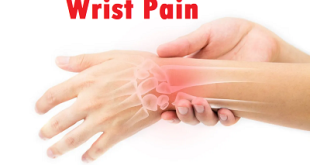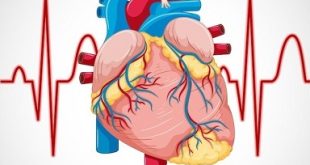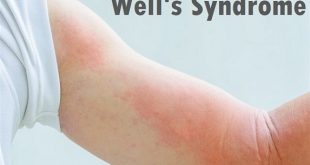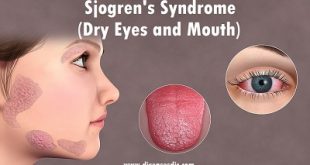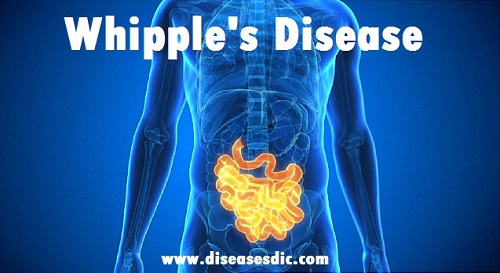Overview of wheat allergy
Wheat allergy is an adverse immune response triggered by specific proteins found in wheat. When an individual with a wheat allergy consumes wheat or wheat-containing products, their immune system identifies certain wheat proteins as foreign invaders, leading to an allergic reaction. This reaction is characterized by the release of histamines and other chemicals that cause symptoms such as skin rashes, itching, swelling, gastrointestinal distress, and even potentially life-threatening anaphylaxis in severe cases. Unlike celiac disease, which is an autoimmune disorder triggered by gluten, a protein in wheat, barley, and rye, a wheat allergy involves an immune response to a wider array of proteins within wheat itself. Avoiding wheat and wheat-derived ingredients becomes crucial for individuals with a wheat allergy to prevent allergic reactions.
Managing a wheat allergy necessitates careful scrutiny of food labels and ingredient lists to steer clear of wheat-based components. Common sources of wheat in the diet include bread, pasta, baked goods, and many processed foods. Individuals with a wheat allergy might need to adopt alternative dietary choices or seek out wheat substitutes, such as rice, corn, or gluten-free grains, to ensure a balanced and allergen-safe diet. Given the potential severity of allergic reactions, individuals diagnosed with a wheat allergy should work closely with healthcare professionals to learn how to identify and manage potential triggers, as well as to develop an emergency plan in case of accidental exposure to wheat allergens.
Epidemiology
The exact occurrence of confirmed wheat allergy (established through food challenges) driven by IgE antibodies remains uncertain. Wheat-related allergic reactions likely range from 0.2% to 1%. Children exhibit a higher prevalence of wheat allergies compared to adults and possess a greater likelihood of developing an allergy if wheat is introduced after six months of life. Normally, children surpass this allergy, with around 65% outgrowing it by age 12. The prevalence of celiac disease, a non-IgE-mediated wheat allergy, is estimated at roughly 1% to 2% in the United States.
Pathophysiology
Wheat allergy involves the release of mediators like histamine, platelet activator factor, and leukotrienes from mast cells and basophils. IgE production is believed to arise from a disruption in oral tolerance, leading to type 2 helper T cell-skewed immune dysregulation. This, in turn, triggers sensitization and B-cell IgE generation. Wheat flour contains allergens such as alpha-purothionin, alpha-amylase/trypsin inhibitor, peroxidase, thioredoxin, lipid-protein transfer, serine proteinase inhibitor, thaumatin-like protein (TLP), gliadin, thiol reductase, 1-cys-peroxiredoxin, and serine protease-like inhibitor.
Celiac disease is distinguished by specific autoantibodies targeting tissue transglutaminase 2 (anti-tTG2), endomysium, and deamidated gliadin peptide. When gliadin peptides breach the epithelial barrier, they trigger CD4 T-lymphocytes activation. These activated cells generate pro-inflammatory cytokines at significant levels. These cytokines then prompt T-helper 1 pattern interferon-gamma and T-helper 2 pattern responses, causing an amplification of B-lymphocytes. Subsequently, these cells differentiate into plasma cells, which produce antibodies against gliadin and tissue transglutaminase. In celiac disease, anticipated histological alterations in the small intestines encompass an augmented count of intraepithelial lymphocytes, elongated crypts, and partial to total villous atrophy.
Types of Wheat allergy
It can be categorized into several types based on the specific proteins in wheat that trigger the allergic reaction. The main types of wheat allergy include:
IgE-Mediated Wheat Allergy
This is the most common type of wheat allergy. It involves the immune system producing immunoglobulin E (IgE) antibodies in response to specific proteins found in wheat. When these proteins are ingested, inhaled, or come into contact with the skin, the IgE antibodies trigger an allergic reaction. Symptoms can range from mild to severe and may include hives, itching, swelling, difficulty breathing, and even anaphylaxis in severe cases.
Non-IgE-Mediated Wheat Allergy
In this type, the immune system reacts to wheat proteins through mechanisms other than IgE antibodies. These reactions are typically delayed and involve immune cells other than IgE-producing cells. Symptoms can include gastrointestinal issues (e.g., vomiting, diarrhea), skin problems, and other non-specific symptoms. This type is sometimes referred to as “cell-mediated” or “delayed-type” hypersensitivity.
Exercise-Induced Anaphylaxis
Some individuals experience an allergic reaction when consuming wheat products and engaging in physical activity shortly afterward. This condition is known as exercise-induced anaphylaxis. The exact mechanisms behind this type of reaction are not completely understood, but it appears to involve the combination of ingested wheat proteins and certain factors related to exercise.
Wheat-Dependent Exercise-Induced Anaphylaxis
This is a specific subset of exercise-induced anaphylaxis where the allergic reaction only occurs when both wheat consumption and exercise take place. It’s thought to be triggered by the interaction between wheat proteins and exercise-induced changes in the body.
Occupational Wheat Allergy
Some individuals who work in environments where they are frequently exposed to wheat, such as bakeries or flour mills, might develop allergic reactions to wheat proteins. This is known as occupational wheat allergy and is often related to inhalation of wheat particles.
It’s important to note that the distinction between these types of wheat allergy can sometimes be complex, and individuals may exhibit overlapping symptoms. If you suspect a wheat allergy, it’s important to seek guidance from a healthcare professional who can accurately diagnose the allergy and recommend appropriate management strategies.
Signs and symptoms of wheat allergy
When your child has a food allergy, their body’s IgE antibodies identify that specific food – wheat, in this case as an invader and can produce symptoms in multiple areas of the body, including:
- Skin: hives (red, blotchy skin that may be itchy) that may include mild to severe swelling
- Lungs: difficulty breathing, shortness of breath, coughing or wheezing
- Eyes: itching, tearing or redness
- Throat: tightness, trouble breathing or inhaling
- Stomach: repeated vomiting, nausea, abdominal pain, cramping, which may lead to diarrhea
- Nose: congestion, clear discharge or itch
- Headache
Reddish Raised Spots
If your child experiences any of these symptoms after eating wheat, call your pediatrician and arrange to have your child tested by a pediatric allergist.
In some cases, exposure to wheat may cause anaphylaxis, a life-threatening allergic response. Symptoms of anaphylaxis include:
- Severe difficulty breathing
- Swelling in the throat and/or difficulty swallowing
- Chest pain or a feeling of tightness
- Dizziness or fainting
- Skin color becoming paler or blue
Causes of wheat allergy
The exact cause of allergies, including wheat allergy, is not fully understood, but it involves a complex interplay of genetic and environmental factors.
Here are some potential causes and contributing factors to wheat allergy:
- Genetic Predisposition: Individuals with a family history of allergies, especially food allergies, may be at a higher risk of developing wheat allergy. Genetic factors play a role in how the immune system responds to allergens.
- Immune System Response: In people with wheat allergy, the immune system mistakenly identifies certain proteins in wheat as harmful invaders. The immune system then produces antibodies, specifically immunoglobulin E (IgE), against these proteins. Upon subsequent exposure to wheat, IgE antibodies trigger the release of histamine and other chemicals, leading to allergic symptoms.
- Early Introduction to Wheat: Some research suggests that introducing wheat to an infant’s diet too early, before their immune system is fully developed, could increase the risk of developing a wheat allergy.
- Cross-reactivity with Pollens: Some individuals with wheat allergy might experience cross-reactivity between wheat proteins and proteins found in certain pollens. This is known as oral allergy syndrome. For example, individuals allergic to birch pollen might experience allergic reactions when consuming certain fruits, vegetables, and grains, including wheat.
- Leaky Gut Syndrome: Leaky gut syndrome refers to increased permeability of the intestinal lining, allowing larger molecules, including allergenic proteins, to enter the bloodstream. This may contribute to the development of allergies, including wheat allergy.
- Environmental Factors: Environmental factors, such as exposure to pollutants and allergens, might play a role in triggering or exacerbating wheat allergy in genetically predisposed individuals.
- Changes in Wheat Composition: Modern wheat varieties have undergone changes in their protein composition compared to traditional varieties. It’s possible that these changes have contributed to an increase in wheat allergies in recent years, although more research is needed in this area.
It’s important to note that wheat allergy is distinct from other conditions related to wheat consumption, such as celiac disease and non-celiac gluten sensitivity. Celiac disease is an autoimmune disorder triggered by the ingestion of gluten, a protein found in wheat, barley, and rye. Non-celiac gluten sensitivity involves experiencing symptoms similar to those of celiac disease without the autoimmune response seen in celiac disease.
Risk factors of wheat allergy
Here are the risk factors associated with wheat allergy.
Family History: If someone in your family has allergies, you might be more likely to have a wheat allergy.
Age: Wheat allergies are more common in babies and young children, but they can happen at any age.
Other Allergies: If you’re allergic to other foods or things like pollen, you might have a higher chance of having a wheat allergy.
Early Exposure: Introducing wheat to babies too early might raise the risk of developing a wheat allergy.
Digestive Issues: People with certain gut problems might be more likely to have wheat allergies.
Occupational Exposure: Jobs where you’re around wheat a lot, like in bakeries, can increase the risk of developing an allergy.
Pollens: Allergies to certain pollens might make you more sensitive to wheat proteins.
Complications
Wheat allergy can lead to various complications, ranging from mild discomfort to severe and potentially life-threatening reactions. The severity of the complications depends on the individual’s sensitivity to wheat proteins and the type of allergic reaction triggered. Some of the complications associated with wheat allergy include:
- Anaphylaxis: A severe reaction causing trouble breathing, swelling, and low blood pressure; needs urgent medical attention.
- Skin Issues: Itchy hives, redness, and swelling on the skin due to allergic reaction.
- Stomach Problems: Upset stomach, vomiting, stomach pain, and diarrhea after eating wheat.
- Breathing Trouble: Wheezing, sneezing, runny nose, and coughing from inhaling wheat particles.
- Exercise Problems: Allergic reaction triggered by eating wheat and then exercising, potentially dangerous.
- Lacking Nutrients: Missing out on nutrients like fiber and vitamins if wheat is avoided.
- Emotional Impact: Stress and loneliness from dealing with the allergy in social situations.
- Life Impact: Allergy management takes time, reading labels, and affects overall lifestyle.
Wheat Allergy Diagnosis
To determine a wheat allergy, your physician will conduct a physical examination, inquire about your medical background, and administer various tests. Potential tests encompass:
- Skin test: Your doctor or nurse will apply small amounts of refined allergen extracts, including extracts from wheat proteins, onto your arm or back. They will then observe for indications of allergic responses. The presence of a red, itchy bump could signify a wheat allergy. Post-test, your skin might become reddish and itchy.
- Blood test: In cases where a skin test is unsuitable due to a skin condition or potential medication interactions, your doctor might analyze your blood for specific allergy-triggering antibodies related to common allergens, including wheat proteins.
- Food challenge test: Under the supervision of a doctor or nurse, you consume a food suspected of causing the allergy. They monitor you for symptoms, starting with a small portion of the food and gradually increasing the quantity.
Your physician might also propose the following:
Food diary: Document your entire food intake and take note of symptom onset.
Elimination diet: You cease consumption of specific foods, usually those known for causing prevalent allergies. Your doctor will guide you on reintroducing foods and tracking the reappearance of symptoms.
Treatment
Avoiding wheat proteins is the best treatment for wheat allergy. Because wheat proteins appear in so many prepared foods, read product labels carefully.
Drugs
- Antihistamines may reduce signs and symptoms of minor wheat allergy. These drugs can be taken after exposure to wheat to control your reaction and help relieve discomfort. Ask your doctor if a prescription or an over-the-counter allergy drug is appropriate for you.
- Epinephrine is an emergency treatment for anaphylaxis. If you’re at risk of having a severe reaction to wheat, you may need to carry two injectable doses of epinephrine (EpiPen, Adrenaclick, others) with you at all times. A second pen is recommended for people at high risk of life-threatening anaphylaxis in case anaphylactic symptoms return before emergency care is available.
Here are the common approaches and treatments for managing the condition:
- Strict Avoidance: The most important and effective treatment is to completely stay away from foods and items containing wheat or its derivatives.
- Allergen Label Reading: Learn how to read ingredient labels carefully to identify wheat-containing products and hidden sources of wheat.
- Substitute Foods: Replace wheat-based foods with alternatives that are safe for you to eat. Gluten-free grains like rice, quinoa, and oats can be used instead.
- Allergy Action Plan: Work with your healthcare provider to create an allergy action plan that outlines steps to take in case of accidental exposure or an allergic reaction.
- Emergency Medication: If you have a history of severe allergic reactions (anaphylaxis), your doctor might prescribe an epinephrine auto-injector. Carry it at all times and know how to use it.
- Medical Supervision: Regularly visit an allergist or immunologist to monitor your condition, discuss symptoms, and receive guidance on managing the allergy.
- Dietary Counseling: Consult a registered dietitian or nutritionist to ensure you’re getting a balanced diet while avoiding wheat.
- Avoid Cross-Contamination: Be careful to avoid cross-contamination when cooking and eating out. Separate utensils, surfaces, and cookware are essential.
- Educate Others: Inform family, friends, coworkers, and caregivers about your wheat allergy so they can help you avoid exposure.
- Nutritional Supplementation: In consultation with a healthcare professional, consider taking vitamin and mineral supplements to address potential nutritional deficiencies caused by avoiding wheat.
- Support Groups: Consider joining support groups for individuals with food allergies. Sharing experiences and tips can be helpful emotionally and practically.
- Safe Dining Out: When eating at restaurants, communicate your allergy to the staff and ask about ingredients and food preparation methods.
- Skin Allergy Medications: For mild allergic skin reactions, over-the-counter antihistamines might help alleviate itching and hives. However, they don’t treat the underlying allergy.
It’s important to remember that wheat allergy treatment is primarily about prevention and managing reactions. There is currently no cure for allergies. If you suspect a wheat allergy or have been diagnosed, consult a healthcare professional for personalized guidance and recommendations tailored to your specific situation.
Prevention of wheat allergy
Preventing wheat allergy is not always possible, especially if someone is genetically predisposed to develop allergies. However, there are some strategies that might reduce the risk or delay the onset of wheat allergy in certain cases:
- Breastfeeding: If you can, breastfeed babies for their first six months to possibly lower allergy chances.
- Wait on Solid Foods: Wait until babies are six months old before giving them solid foods, like wheat, to reduce allergy risk. Talk to a doctor first.
- Different Foods: Give babies a mix of foods to help them develop a strong immune system and maybe lower allergy risk.
- Less Pollution: Keep babies away from pollution and allergens to help them stay healthier.
- Healthy Belly: Make sure babies have a healthy belly by breastfeeding and giving them fiber-rich foods. This might help lower allergy risk.
- Probiotics: Some special bacteria called probiotics could help lower allergy chances. But ask a doctor before trying them.
- Talk to a Doctor: If you worry about allergies, ask a doctor for advice. They can help you make good choices for your child.
 Diseases Treatments Dictionary This is complete solution to read all diseases treatments Which covers Prevention, Causes, Symptoms, Medical Terms, Drugs, Prescription, Natural Remedies with cures and Treatments. Most of the common diseases were listed in names, split with categories.
Diseases Treatments Dictionary This is complete solution to read all diseases treatments Which covers Prevention, Causes, Symptoms, Medical Terms, Drugs, Prescription, Natural Remedies with cures and Treatments. Most of the common diseases were listed in names, split with categories.
